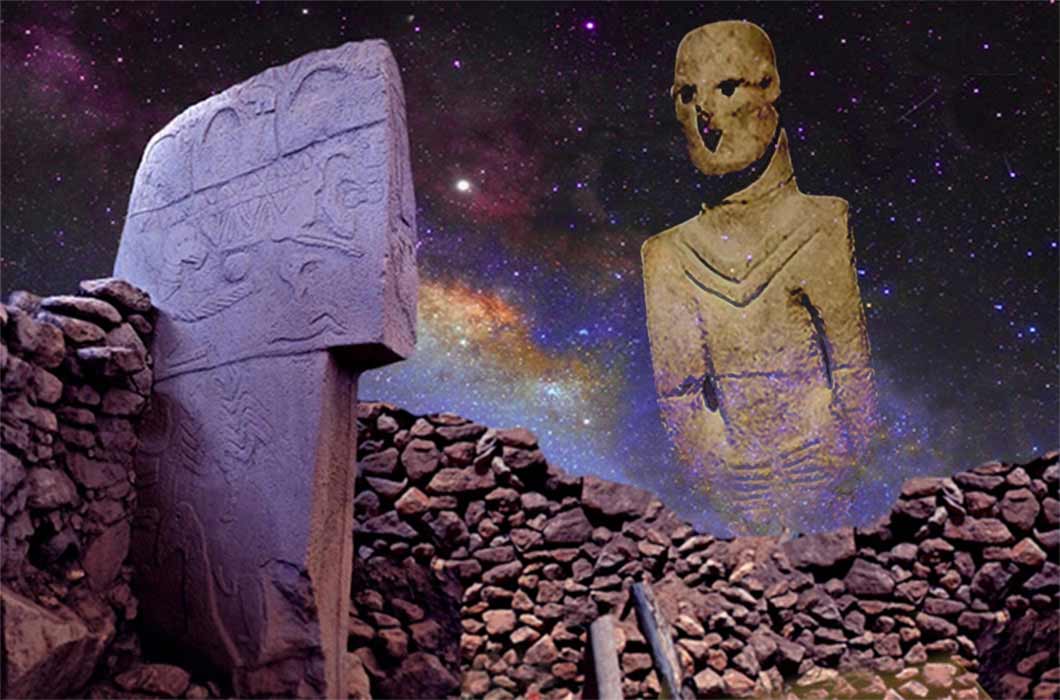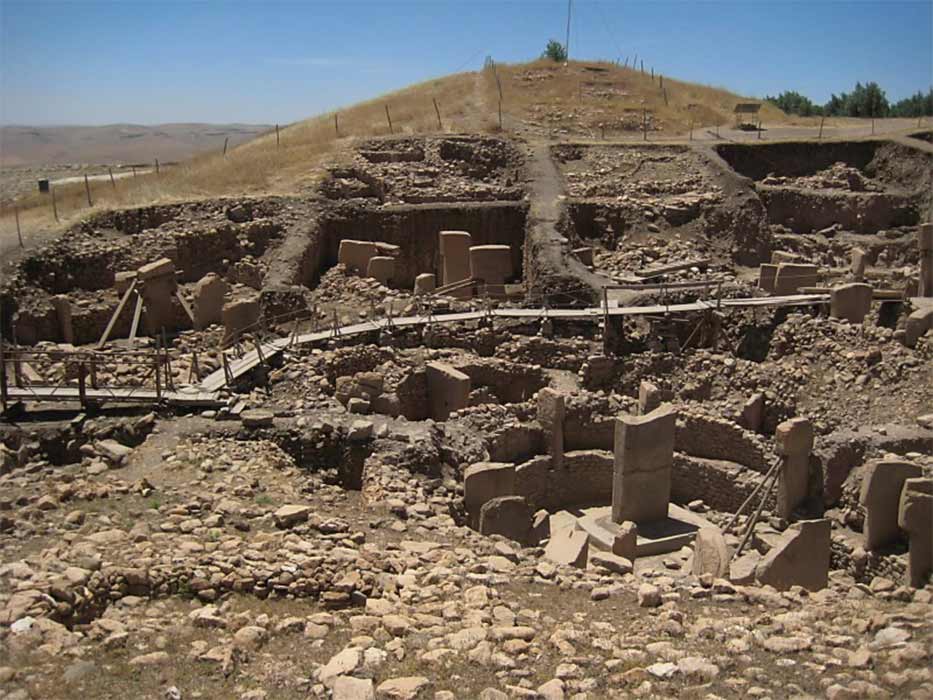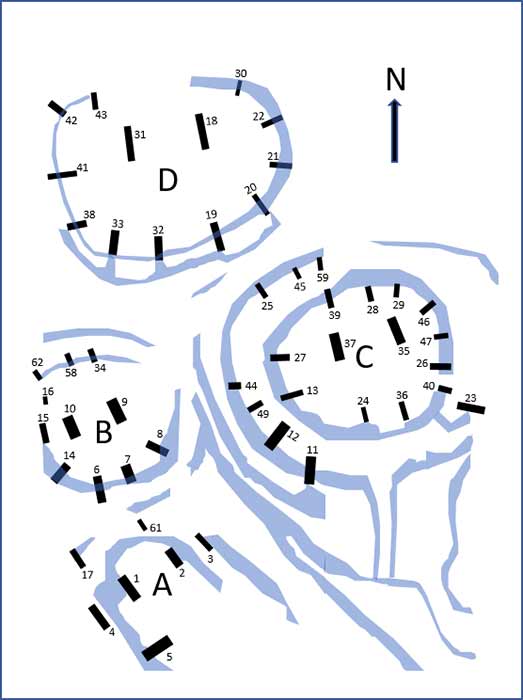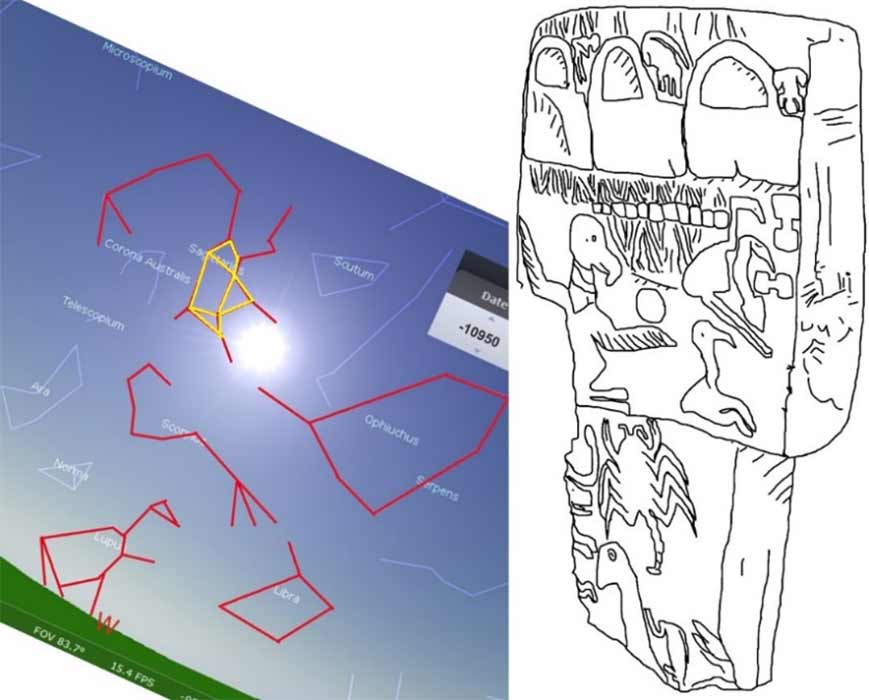
Are The Gōbekli Tepe Enclosures Giant Lunisolar Calendars?
Situated in southern Turkey near the upper Euphrates, Gōbekli Tepe has become famous for its surprisingly advanced megalithic architecture and symbolism, seemingly too early for the hunter-gather culture that built it. Enclosure D at Gōbekli Tepe is dated to around 9500 BC, although it is obvious that Gōbekli Tepe’s origin must significantly predate this. How, and more interestingly why, did its builders make such a magnificent structure at such an early time? Something utterly dramatic must have happened to motivate them. This mystery has attracted many to try and interpret the symbols that cover its megalithic pillars. Archaeoastronomy likely holds the key. Considering that Gōbekli Tepe sits at the threshold of the origin of civilization in the region, anything one can learn about this issue is profoundly important.


Left: Gōbekli Tepe, southern Turkey, with its round temple-like enclosures of megalithic pillars. Right: plan view of enclosures A to D, with T-shaped pillars represented by filled rectangles.
In 2017 Sweatman and Tsikritsis proposed that Pillar 43 from enclosure D at Gōbekli Tepe was thought to encode a date using precession of the equinoxes, where the animal symbols represent familiar constellations and the circular disk symbol represents the position of the sun on the summer solstice. The date apparently ‘written’ on the pillar, taking the head and wings of the vulture/eagle symbol to represent the teapot asterism of Sagittarius, is consistent with the Younger Dryas impact to within a hundred years or so.
Other pillars at Gōbekli Tepe appear to support this interpretation. For example, the fox and tall birds on Pillar 33, from which a tangle of snakes leap out, can be interpreted as a very nice picture of the Taurid meteor stream. This is because when Gōbekli Tepe was occupied, roughly 10,000 BC, the Taurid meteor stream would have emanated from Aquarius (the fox) and then Pisces (the tall birds) over the course of a few weeks. And it is this meteor stream that is credited with providing the cometary debris for the Younger Dryas impact, circa 10,800 BC. It is possible, then, that this mighty extinction-level event, which is now essentially confirmed and is thought to have triggered a mini Ice-Age lasting over 1,000 years, also sparked the development of civilization in the Fertile Crescent of south-west Asia.


Left: Scene around Scorpius from Stellarium. The teapot asterism of the Sagittarius constellation is drawn in yellow. Middle: Sketch of Pillar 43, for comparison. Right: Sketch of Pillar 33, Enclosure D, showing the face with tall birds and snakes. (Image: Courtesy Martin Sweatman)
However, the current author’s latest 2022 research (just submitted for peer review) decodes more of Pillar 43, revealing the possible use of a lunisolar calendar system. Until now, the earliest known lunisolar calendar was credited to the Sumerians, of the third millennium BC, who lived only a few hundred miles south of Gōbekli Tepe near the mouth of the Euphrates.
Ancient Lunisolar Calendar Systems
Lunar calendars follow the moon’s cycle perfectly, with months of 29 or 30 days. Solar calendars follow the sun’s progress through the seasons instead, with typically 365 days plus the occasional leap day. Lunisolar calendars, on the other hand, try to follow both the moon’s and the sun’s cycles as best they can. Typically, this means using years with either 12 or 13 lunar months, as needed. The Metonic cycle is one such calendar, adopted by Ancient Greeks, Babylonians and Hebrews, which intercalates an extra lunar month in seven out of every 19 years.
- Prehistoric Zodiacal Dating Code Revealed At Göbekli Tepe
- Karahan Tepe: Stunning New Discovery of Winter Solstice Sunrise Alignment
- Taş Tepeler: Anatolia’s Land Of Great Transformation
The Ancient Egyptians, meanwhile, used a solar calendar with exactly 12 months of 30 days each, plus five extra ‘epagomenal’ days to make a 365-day year. The lunisolar calendar used at Gōbekli Tepe, however, seems instead to use 12 months of 29 or 30 days plus 11 additional epagomenal days. Pillar 43 is illustrative.




